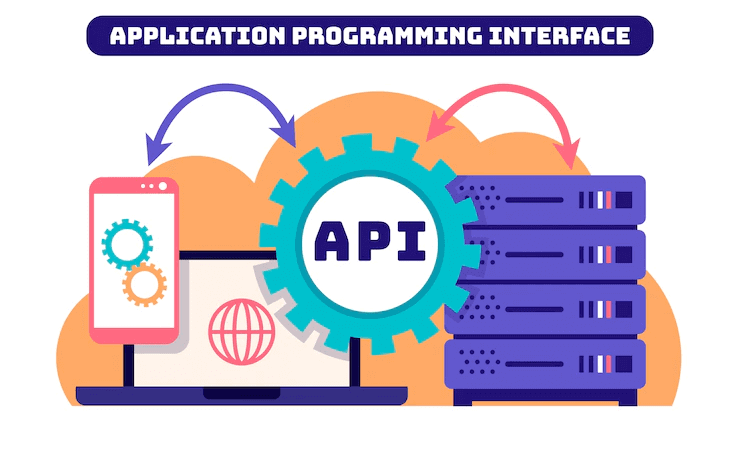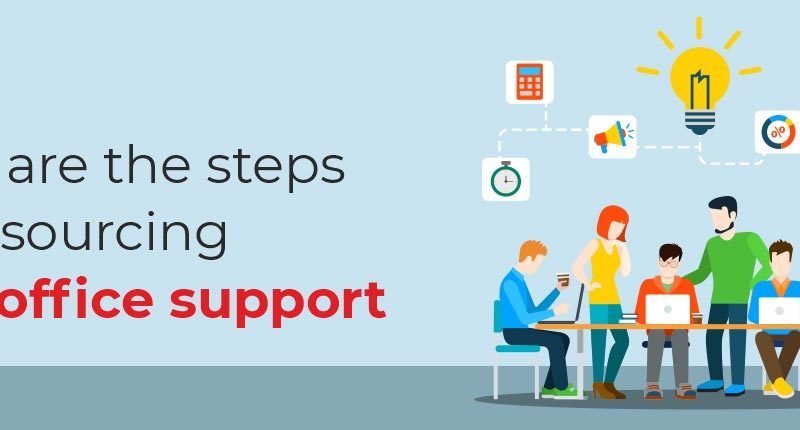define a growth strategy: 7 key steps

Growth is essential for the survival of a company. According to a study carried out by Confecamaras «in the OECD countries and Latin America, more than half of the new companies fail in the first five years of life. In the first year alone, on average, between 20% and 30% of start-ups disappear.
These numbers are generally consistent across most industries, but they also highlight the importance of planning for growth from day one.
A concrete growth strategy is more than a marketing strategy, it is a crucial cog in the machinery of your company. Without it, you will be at the mercy of a fickle consumer base and market fluctuations.
Create an effective sales plan for your company
What is a business growth strategy?
The business growth strategy allows organizations to expand their business. Growth can be achieved through practices such as adding new locations, investing in customer acquisition, or expanding a product line. A company’s industry and target market influence the growth strategies you can choose.
Start today by creating a growth strategy, consider the options available, and include some in your business plans. Depending on the type of business you are building, your growth strategy could include things like:
- Opening of new stores
- Investment in customer acquisition
- Evaluation of franchise opportunities
- Product line expansion
- Offering products online through multiple platforms
Your industry and target market will influence your decisions, but acquiring new customers will almost certainly play a big role.
Not sure what it means for your business? Here are some tactics to achieve growth.
How to define a successful growth strategy?
- Choose your target growth area.
- Carry out a market and sector study.
- Set growth goals.
- Plan your way of proceeding.
- Determine your growth requirements.
- Execute the plan to make it successful.
1. Choose your target growth area
It’s great that you want to grow your business, but what exactly do you want to grow?
Your business growth strategy should focus on specific areas. The approach you choose could be among this list:
- Increase in the number of employees
- Expansion of office space, shops and/or warehouses
- Adding new locations or branches
- Expansion to new regions, localities, cities or countries
- Incorporation of new products and/or services
- Expansion of places of purchase (i.e. selling in new stores or launching an online store)
- Increased income and/or profits
- Increased customer base and/or customer acquisition rate
It’s possible that your growth plan encompasses more than one of the initiatives outlined above, which makes sense: good growth doesn’t happen in a vacuum.
For example, increased unit sales will lead to increased revenue and possibly the creation of more locations and staff to support that growth.
2. Carry out a market and sector study
Once you have chosen how you want your company to grow, you will have to justify why you want to develop in that area (and if it is possible to carry it out).
The best way to determine whether the desired growth is necessary and feasible is to research the state of the industry. For example, you can conduct surveys and focus groups with current and potential customers or research the sector.
The knowledge and facts you uncover in this step will shape your project’s expectations and growth goals. This will allow you to better determine the schedule, budget, and end goal. Which brings us to the fourth step.
3. Set growth goals
Once you have determined the growing area you are going to grow and why you are going to do it, the next step is to determine how much you are going to grow.
These goals should be based on your ultimate aspirations, i.e. where you see your organization in the future, but they should also be achievable and realistic, so setting a goal based on industry research is invaluable.
Lastly, take steps to quantify your goals in terms of metrics and timelines. Aiming to “increase sales 30% every quarter for the next three years” is much clearer than simply writing: “increase sales”.
4. Plan your way of proceeding
Next, outline how you will achieve your development goals with a detailed growth strategy. Once again, we suggest you write a comprehensive growth strategy plan for your team to understand and buy into.
This action plan should contain a list of actionable items such as: deadlines, teams, people who will be in charge, and resources to reach your growth goal.
5. Determine your growth requirements
The last step before putting your plan into action is to determine what your team will need throughout the process. These are specific resources that will help you reach your growth goals faster and more accurately. Some examples can be:
- Funding – Organizations may need a capital investment or internal budget allocation to carry out the growth project.
- Tools and software: consider what technological resources may be necessary to accelerate and/or have information on the growth process.
- Necessary Services: Growth can best be achieved with the help of consultants, designers or project managers in a specific field.
6. Execute the plan to make it successful
With your planning, resourcing, and goal setting complete, you’re ready to execute your company’s growth plan and drive business results.
Throughout this time, be sure to hold stakeholders accountable, keep the line of communication open, and compare initial results with projected growth goals to see if projected results are still achievable or if anything needs to be adjusted.
Your growth plan and the tactics you use will ultimately be specific to your company, but there are a few strategies you can consider as starting points.
Types of growth strategies
- The “viral push”
- milestone references
- word of mouth
- The “when they go, we come” approach
- Personalized accompaniment
1. The “viral push”
Some growth strategies are designed to be completely self-sustaining. They require a kick start, but ultimately rely primarily (or solely) on user enthusiasm to keep them going. We will call this a “viral pulse”.
The basic premise is simple:
- Someone tests your product.
- You are given a valuable incentive to share it with others.
- They accept and share it with their network.
- New users sign up, see the incentive for themselves, and share it with their networks.
- Is repeated.
For example, a cloud storage company trying to get off the ground might offer users an extra 500 MB for each referral.
Ideally, the incentive should be compelling enough for users to actively and enthusiastically encourage their friends and family to join the project.
That said, the viral boost doesn’t offer a guarantee that they’ll go (as the name implies) “viral” plus they’re less effective because they’ve become more common. But the potential is still there.
Part of the appeal is that they flip the traditional funnel on its head:
Instead of needing as many leads as possible at the top, a “viral” funnel only requires one happy user to share it with others. As long as each referral results in at least 1.1 new users, the system will continue to grow.
2. References by milestones
The milestone referral model is similar to viral momentum in that it relies on incentives to get it up and running. But landmark references add a more intricate element to the process.
Companies that use milestone benchmarks offer rewards for reaching specific benchmarks. In many cases, “milestones” are metrics like the number of referred friends.
For example, a company may include different or increasingly attractive incentives with one, five, and ten referrals, rather than a flat incentive for each individual referral. This strategy is often leveraged to encourage users to bring a volume of friends and family that aligns with their specific business goals.
The strategy also adds an attractive element to the recommendation process. When done right, referral milestones are easy to share, with relatively easy goals, and rewarded with compelling, tangible products.
3. Word of mouth
Word of mouth is organic and effective. Recommendations from friends and family are one of the most powerful incentives for consumers to buy or try a product or service.
The secret to effective word of mouth lies in a deep-seated psychological bias in all people: we unconsciously believe that the majority know better.
Social proof is critical to the success of sales copywriting and broader content marketing efforts. This is why companies pay so much attention to their online reputation.
They know that in today’s customer-driven world, where communication methods change and information is available to everyone, a single negative blog post or tweet can compromise an entire marketing effort.
Pete Black shaw, the father of the growth of digital word of mouth, says that “satisfied customers tell three friends; upset customers, 3000».
The key to word of mouth is to focus on positive user experience. You have to grow a base of satisfied customers and keep the feedback flowing.
With this method, you have to focus on delivering an outstanding user experience, and then users will spread the word for you.
4. The “when they go, we come” approach
Sometimes the best growth strategy a business can employ is to stand out by offering a unique experience that sets it apart from other businesses in its area. When monotony defines a sector, the company that breaks it usually finds a very important competitive advantage.
Let’s say your company has developed an app for transitioning playlists between music streaming apps. Let’s also say that you have a few competitors that do the same thing, but also generate revenue through ads and paid subscriptions, which frustrates users.
In that case, it’s best to try to get rid of some of the problems that customers have when using your competitors’ programs. If your service is paid, you might consider offering a free trial of an ad-free experience right from the start.
The thing is, there is often a lot of value and opportunities to differentiate yourself. If you can do something unexpected, you can capture the attention of consumers and take advantage of their changing interests.
5. Personalized accompaniment
It may be a while before this particular approach can be used again, but it is effective enough to warrant mention. Sometimes adding a human element to your growth strategy can help make things better in your business.
Potential customers are often receptive to a personal approach, and nothing is more personal than immediate, face-to-face interactions. Interacting personally with potential customers can be a great way to get your business the traction it needs to get off the ground.
This could mean organizing or sponsoring events, attending conferences related to your space, hiring brand ambassadors, or any other direct and strategic way to reach your target audience in person.
Successful companies plan for growth. They work for it and they earn it. What is your plan?






